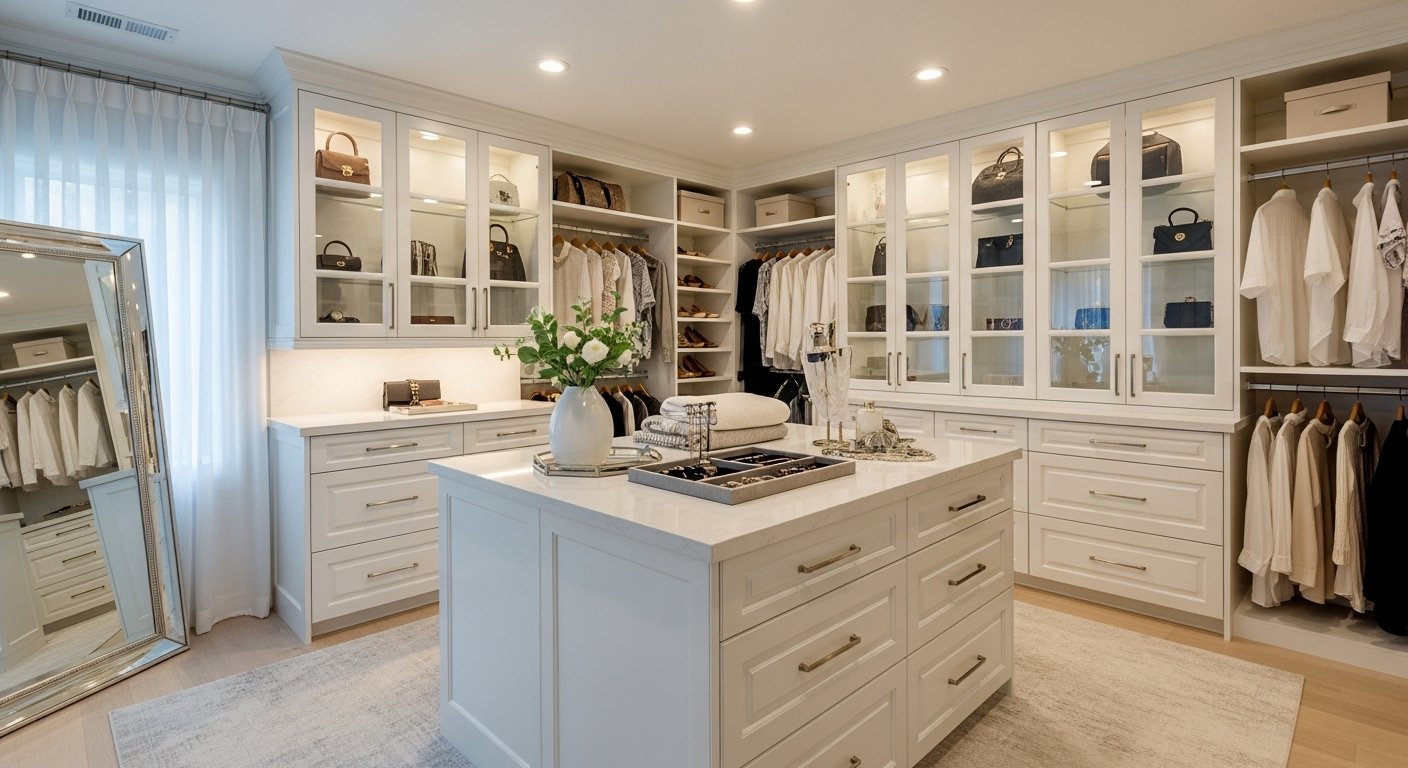Walk-in master closets are no longer just a luxury; they have become a staple in modern home design. They provide an organized space for clothes, shoes, and accessories while adding a touch of sophistication to any home. In this comprehensive guide, we will explore the essentials of walk-in master closets, from design principles to storage solutions and tips for maximizing functionality and style.
1. The Appeal of Walk-in Master Closets
A walk-in master closet offers several advantages:
a. Organization and Accessibility
With dedicated spaces for different items, a walk-in closet helps keep everything organized and easily accessible. Say goodbye to cluttered wardrobes and hard-to-reach shelves.
b. Enhanced Home Value
Well-designed walk-in closets are a sought-after feature in real estate, often increasing the market value of a home.
c. A Personal Sanctuary
Walk-in closets provide a private space for dressing and self-care, complete with mirrors, seating, and even decorative touches like artwork or flowers.
2. Key Design Principles
a. Space Planning
The first step in designing a walk-in closet is assessing the available space. A successful design considers:
- Dimensions: Ensure adequate room for shelves, drawers, and walking space.
- Flow: Optimize the layout for smooth movement and accessibility.
b. Lighting
Proper lighting enhances visibility and adds a luxurious feel. Options include:
- Ambient Lighting: Ceiling fixtures or recessed lights for overall illumination.
- Task Lighting: LED strips under shelves to highlight specific areas.
- Accent Lighting: Chandeliers or pendant lights for a touch of elegance.
c. Storage Solutions
Tailored storage options maximize utility. Consider the following:
- Hanging Rods: For dresses, shirts, and trousers.
- Shelving Units: Adjustable shelves for sweaters, jeans, and accessories.
- Drawers: For undergarments, jewelry, and smaller items.
- Shoe Racks: Horizontal or vertical designs for optimal storage.
- Accessory Hooks: Ideal for belts, scarves, and ties.
d. Materials and Finishes
High-quality materials like hardwood, glass, and metal ensure durability and aesthetic appeal. Popular finishes include:
- Matte and Glossy: Depending on the desired ambiance.
- Natural Wood: For a warm, timeless look.
- Glass and Mirrors: To create an illusion of space.
3. Customization Options
a. Personalization
Tailor your walk-in closet to suit your lifestyle:
- His and Hers Sections: Separate spaces for individual preferences.
- Seasonal Storage: Rotating wardrobes for summer and winter.
- Specialized Compartments: Custom slots for hats, handbags, or watches.
b. Luxury Features
Enhance functionality and style with:
- Island Counters: Provide additional storage and serve as a workspace.
- Seating Areas: Comfortable benches or ottomans for convenience.
- Vanity Stations: A dedicated space for makeup and grooming.
- Smart Technology: Motion-sensor lighting and app-controlled features.
4. Maximizing Small Spaces
Not all homes have large areas for walk-in closets, but even small spaces can be transformed with clever solutions:
a. Utilize Vertical Space
Install floor-to-ceiling shelving and use stackable storage boxes.
b. Mirror Magic
Mirrors create an illusion of depth and enhance lighting.
c. Sliding Doors
Sliding or pocket doors save space compared to traditional swing doors.
d. Multi-functional Furniture
Choose storage ottomans or foldable seating to save space.
5. Maintaining Your Walk-in Closet
a. Regular Decluttering
Donate or discard items you no longer need to keep the space tidy.
b. Seasonal Swaps
Rotate clothing based on the season to free up space.
c. Cleaning Schedule
Dust shelves, vacuum the floor, and wipe down surfaces regularly.
d. Storage Solutions
Use bins, baskets, and dividers to keep items organized.
6. Popular Styles and Themes
a. Minimalist
Characterized by neutral colors, sleek lines, and uncluttered spaces.
b. Glamorous
Incorporates luxurious materials, mirrored surfaces, and crystal accents.
c. Industrial
Features raw materials like metal and reclaimed wood for a modern, edgy vibe.
d. Classic
Timeless elegance with rich wood tones, crown molding, and traditional layouts.
7. Budgeting and Costs
a. DIY vs. Professional Installation
- DIY: Cost-effective but requires time and effort.
- Professional: Guarantees high-quality results but can be expensive.
b. Average Costs
Walk-in closet installations typically range from $2,000 to $10,000, depending on size, materials, and customization.
c. Cost-saving Tips
- Opt for ready-made systems.
- Use cost-effective materials like laminate instead of solid wood.
- Focus on essential features and add luxury elements later.
8. Trends in Walk-in Closet Design
a. Sustainable Materials
Eco-friendly choices like bamboo and recycled wood are gaining popularity.
b. Integrated Technology
Smart lighting, automated rods, and climate control enhance convenience.
c. Open Concepts
Removing doors for an airy, boutique-like feel.
d. Bold Colors and Patterns
Vibrant wallpaper or painted accents add personality to the space.
Conclusion

Walk-in master closets combine functionality with style, making them an invaluable addition to any home. Whether you’re designing a grand space with all the bells and whistles or maximizing a compact area, careful planning and thoughtful choices can create a closet that reflects your personality and meets your needs. With the right balance of organization, aesthetics, and innovation, your walk-in master closet can become a true sanctuary.
Designs of Walk-in Master Closets






